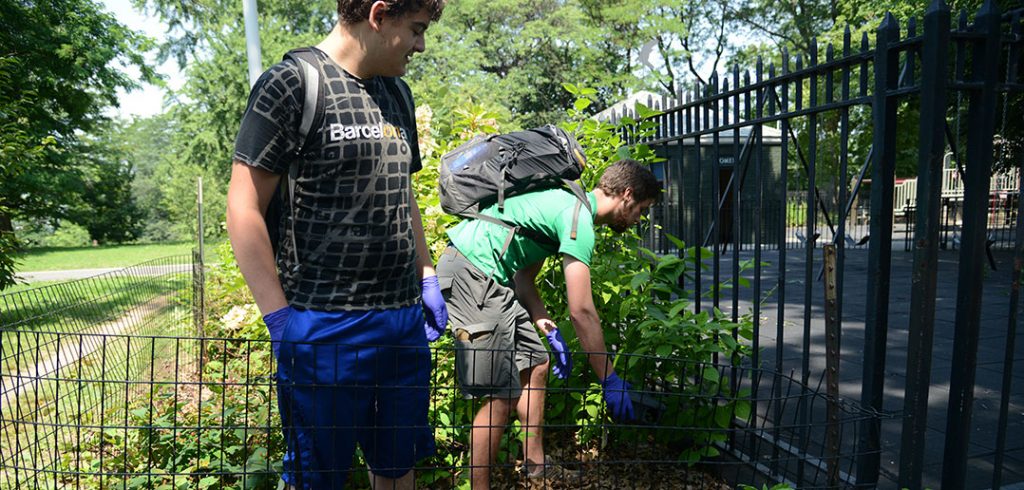You won’t likely see them during the day, of course, but on Saturday, May 20, rats will be front and center at “Street Art for Rats,” an afternoon of art and science.
The event, which takes places from 1 to 5 p.m., will feature five artists recruited by the Centre-fuge Public Art Project to paint panels at the park.
It’s being organized by Fordham biology doctoral student Matthew Combs, who is researching rats for his dissertation under the supervision of associate biology professor Jason Munshi-South, Ph.D. Combs and others will be on hand to answer questions and will have on display rat bones, skins, skulls, and assorted rat-related paraphernalia.
The event is part of a $500,000 National Science Foundation grant that Munshi-South received in 2015 to map the city’s “ratscape.”
Combs actually got the idea to partner with Centre-fuge after he ran into a friend who works there while he was out trapping rats a few years ago. The group enlivens mundane scenes like construction trailers with art, and has mounted numerous exhibits in the park before.
“I think street art makes a lot of sense. The medium is very much created in the city and has that a setting of coming straight out of the urban environment,” he said.
Three artists have been confirmed so far: New York City-based Denton Burrows, and Belarus natives Yu-Baba and Key Detail.
In conversations with the artists, Combs said he’s stressed that rats should be the main focus of the murals, but the art should help the public understand them in the context of the larger urban environment. Some of the questions he expects to answer are how many rats are in the city (estimates range from 250,000 to 2 million), and whether it’s true they can flatten themselves out to squeeze through cracks (yes, but not as much as some assume).
He’s excited to see how the artists choose to represent them because rats evoke such strong reactions.
“Every New Yorker has a rat story, or has their own ideas about what drives New York City rats and where they come from. So by letting each artist take ideas and run with them, I think we’ll end up with some really interesting creations,” he said.


